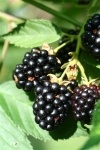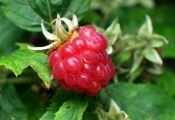PLANT COLLECTION: FRUIT
Delicious…
Vegetables in your garden are delicious, healthy, beautiful and educational for kids.
Our wide range of fruit species are grown in pots or containers and can therefore be planted almost all year round.
We have apples, pears, plums, cherries … with short or medium stems and in many varieties. You can grow them next to a wall as espaliers or create an edible hedge. Most species are grafted onto slow-growing rootstocks to prevent the trees from growing too high.
PLANTING AND FERTILISATION
Always provide sufficient spacing: 4 to 6 m in case of a short trunk and 6 to 8 m in case of a medium trunk.
Keep a 1 m area around the trunk free from weeds and grass to make the annual fertilisation process easier.
You should fertilise every year with some good organic or mineral fertilisers one year and liming the following year.
Apply potassium fertiliser every 2 to 3 years.
PRUNING
General rules
Cut back suckers as much as possible.
Remove any inward growing or vertical branches.
Remove dead wood.
Make sure the crown lets in plenty of light and air.
Always use sharp, quality tools.
Never allow the bark to tear.
Always make slanting cuts and seal pruning wounds to protect them from water and fungi.
For young trees the aim is to create a beautiful tree shape that allows sufficient light and air into the crown.
With espaliered trees, the shape is particularly important and the main branches should retain as many short twigs as possible.
Apple and pear trees are pruned in the same way.
Bear in mind that they fruit mostly on 2-year-old wood, so pruning is all about the extensions.
One-year-old branches are therefore not completely cut back and a section is left.
Sour cherry:
Requires little or no pruning.
Prune 1 to 2 weeks after harvesting, if necessary.
Sweet cherry:
Follow the general rules of pruning and always prune back to a stump after the harvest in June-July. Leave 2 to 3 cm of the branch.
Plum:
Snoei enkel na de oogst en dit alleen om de vorm te bewaren of hinderlijke takken te verwijderen.
Blackcurrant:
During the harvest, cut the fruit-bearing wood and pick its berries.
Right after harvest, prune away the branches that bore the fruit.
 Peach, nectarine, apricot:
Peach, nectarine, apricot:
Make sure the crown stays open in young trees.
Mainly prune just after flowering.
Cut away any heavy branches after the harvest.
Why not try an espaliered peach tree against a south-facing wall?
Walnut:
Requires little or no pruning.
Prune snapped, rubbing or troublesome branches immediately after the harvest period.
Chestnut:
Only young trees require pruning for shape after the worst period of frost.
Hazel:
Requires little or no pruning.
You may wish to thin out the branches in February.
Blackberry:
The one-year-old canes bear the fruit.
Remove all the branches that bore the fruit and possibly shorten the side branches towards a main branch.

Raspberry:
- Autumn-fruiting raspberry:
Cut back everything to ground level in December or March.
If necessary, thin out the canes emerging from the ground in spring.
This year’s growth will bear the fruit. - Summer-fruiting raspberries:
Only cut away the year-old canes, which are the once that produced the fruit.
On the growth
Gooseberry:
Pruning is limited to possibly thinning out and shortening branches that are too long.
Root pruning:
Root pruning can help fruit trees that are growing too fast or showing poor blooming or fruiting. Sometimes the roots are pruned after hard pruning.
Root pruning strongly reduces the tree’s growth. This then greatly improves the tree’s bloom.
Method: position an earth spade (40 cm blade) at 30 to 40 cm from the tree and cut through the roots. Then move around the tree in a circle by skipping a spade width, then cutting out the roots, skipping another spade width, then cutting out the roots, and so on.






